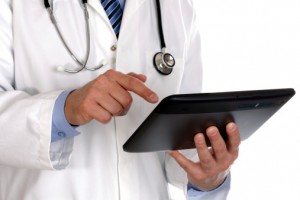Order Medical Records Can Help You Maintain a Personal Health Record
Get the information needed to populate your Personal Health Record from OMR
 One of the trends being associated with the implementation of the Affordable Care Act is increased personal involvement in health care decisions. One potential manifestation of this is the growing popularity of Personal Health Records, or PHRs.
One of the trends being associated with the implementation of the Affordable Care Act is increased personal involvement in health care decisions. One potential manifestation of this is the growing popularity of Personal Health Records, or PHRs.
What is a PHR?
A PHR is basically a digital account where you can keep information about your health care for easy access. Many health plan providers offer a PHR tool to their enrollees. If your health plan does not offer a PHR tool, you may still be able to access one through a private company. Just make sure whichever PHR provider you choose maintains proper internet security protocols to keep your personal health information private. PHRs can be shared with your next of kin or emergency contacts so that they will be able to release this information to medical professionals in the event of a medical emergency.
What Information Does a PHR Include?
A PHR should include the following information:
- Contact information for your health care providers
- Insurance ID, policy number, and contact information
- Numbers for your emergency contacts
- A list of your medications and allergies
- Information about recent medical tests, treatments, surgeries, and hospitalizations
Often, the best way to gather this information when you are setting up your PHR for the first time is to contact OMR. We can request your medical records for you from your primary care physician as well as from any specialists or hospitals that might have provided care to you. You can choose to receive your medical records as a printed document or as a secure electronic download. From there it’s just a matter of transcribing your vital health information from the records into the PHR tool.
Why Should I Use a PHR?
Maintaining a PHR makes it easy to access information about your health and share it with your health care providers, caregivers, and family members quickly when the need arises. You can get better care from doctors in an emergency if you can provide them with information about your medical history right away, and you can avoid getting duplicate procedures or tests done by using your PHR to communicate with new doctors. Some PHR tools even allow you to refill your prescriptions and communicate with your doctor right in the tool to further streamline and centralize your health care experience.













